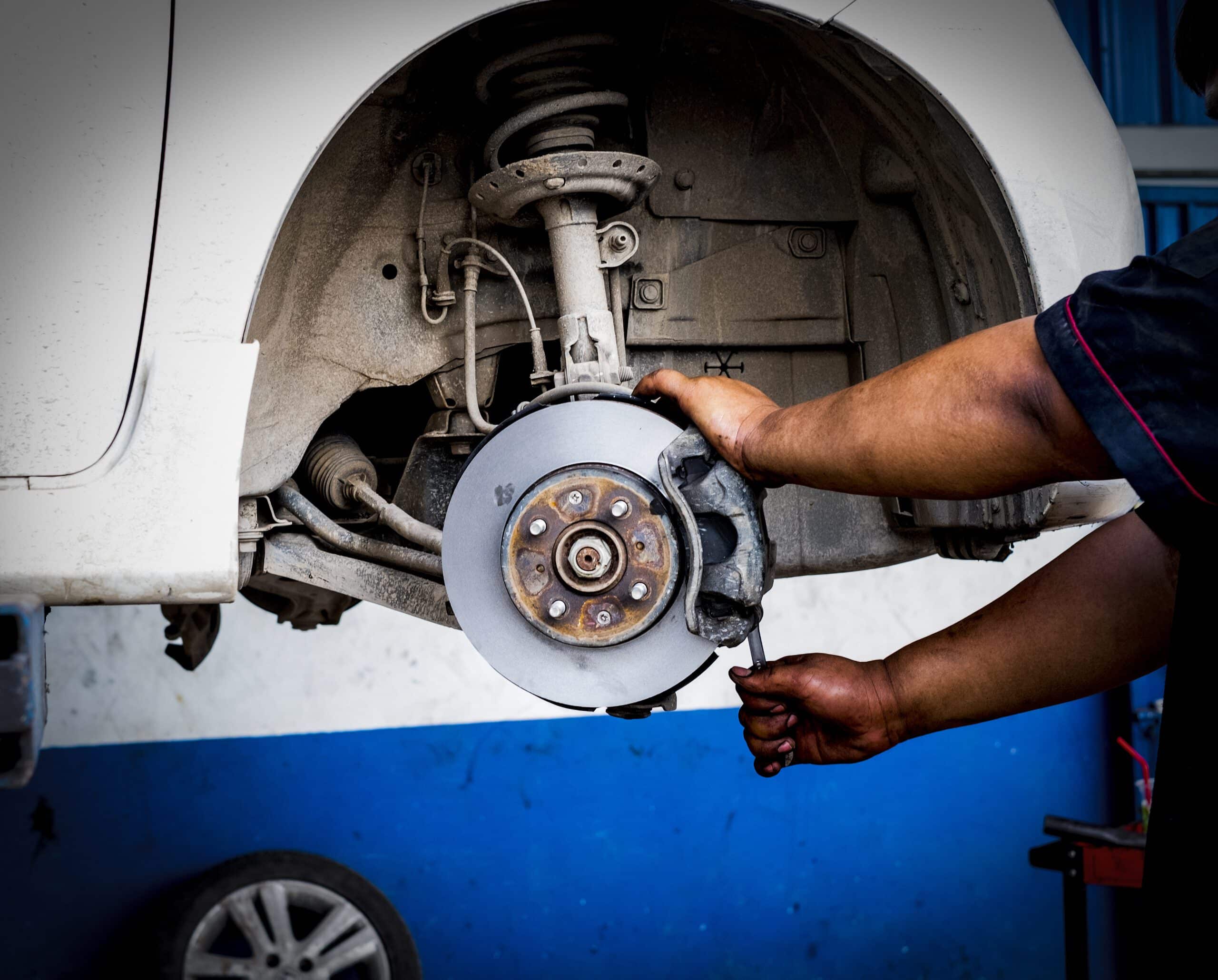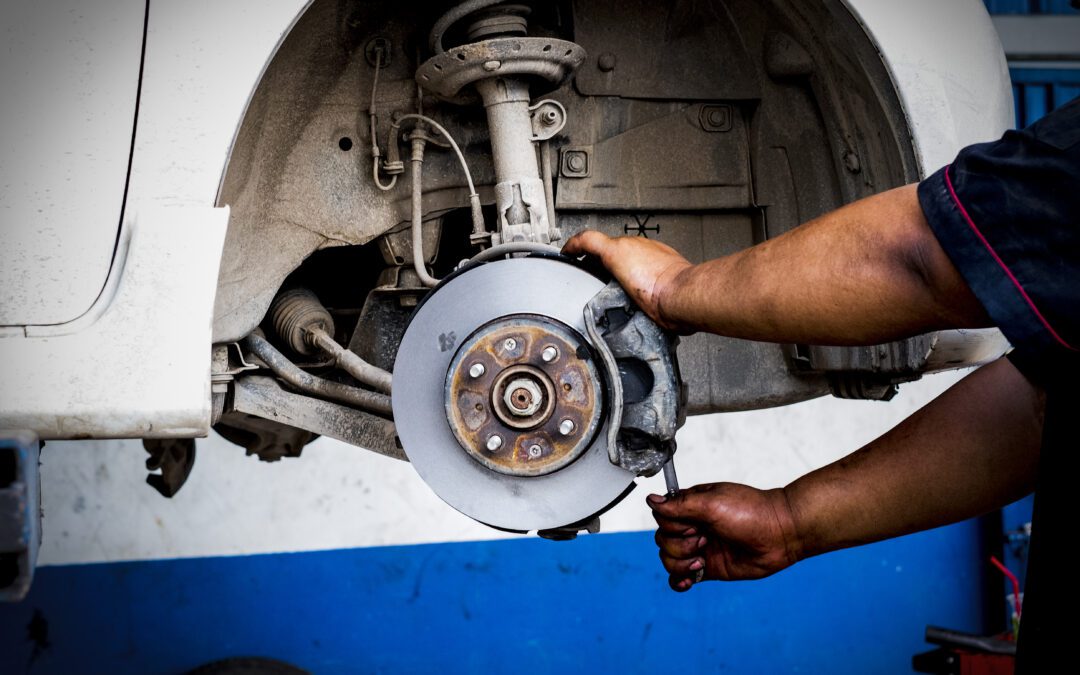Rotors and Drums

Understanding Best Brake Component | Express Auto &Amp; Tires
If you’re new to the world of brake components, or just need a refresher on how they work, you’ve come to the right place. In this brake component guide, we’ll be breaking down rotors and drums – what they are, what they do, and how they work with other brake components.
- Rotors and drums are two types of braking surfaces that are commonly used in vehicles.
- Rotors are typically made from cast iron or steel and are attached to the wheel hub.
- Drums are usually made from aluminum or steel and are mounted onto the axle. When the brake pedal is depressed, hydraulic fluid is forced into the braking system.
This fluid pressure causes the calipers to close around the rotor or drum, which creates friction that slows down the vehicle. There are several benefits to using rotors and drums as braking surfaces. They’re both very durable and can withstand a lot of wear and tear. They’re also relatively inexpensive to manufacture, which makes them a popular choice for many vehicles. However, there are also some drawbacks to using these braking surfaces. For example, they can be more susceptible to warping or cracking if they overheat.
Additionally, drums can sometimes cause issues with brake fade – when the brakes start to feel less responsive after extended use. If you’re not sure which type of braking surface is right for your vehicle, consult with a qualified mechanic or brake specialist. They can help you identify the ideal choice for your vehicle’s specific needs.
How Do The Brake Components Rotors and Drums Work?
To understand how rotors and drums work, it’s important to first know how brakes work in general. When you press the brake pedal, hydraulic fluid is sent from the master cylinder to the calipers. The calipers then squeeze the brake pads against the rotor or drum, which creates friction.
This friction causes the wheels to slow down or stop. Rotors are found on most modern vehicles. They’re usually made of cast iron or steel and they’re attached to the wheel hub. When the brake pads squeeze against the rotor, it slows down or stops the wheel from turning. Drums are found on some older vehicles.
They’re usually made of cast iron and they’re attached to the wheel hub. When the brake pads squeeze against the drum, it slows down or stops the wheel from turning.
The Difference of Brake Components Between Rotors and Drums
When it comes to your car’s brakes, there are two main types of brake components: rotors and drums. Both rotors and drums work together to create the stopping power that you need to slow down and stop your car. So, what’s the difference between rotors and drums? Rotors are typically made from cast iron or steel and they are attached to your car’s wheels.
- Drums, on the other hand, are usually made from aluminum or another type of metal.
- Rotors are responsible for providing the majority of the braking power. When you press your foot on the brake pedal, hydraulic fluid is sent to the calipers.
- The calipers then squeeze the pads against the rotor, which creates friction that slows down the wheel.
- Drums work similarly, but they’re located inside of your car’s wheels.
When you press your foot on the brake pedal, hydraulic fluid is sent to the wheel cylinders. The wheel cylinders then push the shoes against the drum, which creates friction that slows down the wheel.
Pros and Cons of Brake Components: Rotors and Drums
When it comes to your car’s braking system, there are two main types of brake components: rotors and drums. Both have their pros and cons, so it’s important to know the difference before you make a decision about which type is right for your vehicle. Rotors are typically made from cast iron or steel and are attached to the wheel hub. When the brake pedal is applied, the caliper presses against the rotor, causing friction that slows the wheel down.
Rotors can last anywhere from 30,000 to 70,000 miles, but they may need to be replaced sooner if they become warped or damaged. Drums are similar to rotors, but they’re usually made from aluminum or composite materials. They’re also attached to the wheel hub, but they have a drum-like shape that encloses the brake shoes.
When the brake pedal is applied, the shoes expand and press against the drum, causing friction that slows the wheel down. Drums typically last between 20,000 and 40,000 miles before they need to be replaced. So, what are the pros and cons of each type of brake component? Let’s take a look:
Rotors Pros:
- Can last up to 70,000 miles with proper care
- Require less frequent replacement than drums
- Provide better braking performance than drums in most cases
- Are less likely to overheat
Cons:
- Can warp or become damaged more easily than drums
- More expensive than drums
- Require more maintenance and care to ensure proper performance
Drums Pros:
- Less expensive than rotors
- Produce less noise and vibration compared to rotors
- Are more resistant to warping and damage
- Require less frequent replacement than rotors
Cons:
- Cannot provide the same level of braking performance as rotors in most cases
- Can overheat more easily than rotors
- Require more frequent inspection and maintenance
- Can cause increased wear on brake pads
Maintenance Tips of Brake Components for Rotors and Drums
When it comes to maintaining your brake components, rotors, and drums are two of the most important components. Here are some tips on how to keep them in good condition:
- Inspect your rotors and drums regularly for wear and tear. If you notice any damage, have them replaced as soon as possible.
- Make sure to clean your rotors and drums regularly to prevent brake dust buildup. This can cause your brakes to wear down prematurely.
- If you live in an area with a lot of rain or snow, make sure to dry off your rotors and drums after driving through puddles or slush. Moisture can cause corrosion and rusting.
- If you do a lot of heavy braking, such as when downhill mountain biking, you may need to replace your rotors more frequently than usual. Be sure to consult with a qualified mechanic if you’re unsure about how often to replace your brakes.
- Always use quality brake fluids and lubricants when servicing your brakes to ensure they are working optimally.
Cost Considerations When Replacing Brake Components
The cost of replacing brake components can vary depending on the type of vehicle you have and the severity of the damage. However, there are some general considerations to keep in mind when budgeting for this type of repair.
If you need to replace your rotors, expect to pay anywhere from $100 to $300 per rotor. The price will depend on the size and quality of the rotor.
If you also need to replace your drums, the cost will be around $200 to $400. Keep in mind that these prices are just for the parts. You will also need to factor in the cost of labor, which can range from $50 to $100 per hour. In most cases, it will take two hours or more to complete the job. So, when budgeting for a brake component replacement, you should expect to spend anywhere from $350 to $800. Of course, this is just a rough estimate – the actual cost will vary based on your specific situation.
Alternatives to Standard of Brake Components: Rotors and Drums
If you’re looking for an alternative to standard rotors and drums, there are a few options available. One option is to go with aftermarket rotors and drums. Aftermarket rotors and drums are usually made from higher quality materials than standard parts, so they can last longer and perform better.
Another option is to upgrade to a performance brake kit. Performance brake kits often include larger and more powerful rotors and drums, as well as other components like high-performance brake pads and calipers. Either way, upgrading your brakes can improve your car’s performance and safety. Rotors and drums are essential components of a brake system, and understanding the differences between the two is important for proper maintenance.
Rotors provide better performance but require more frequent service, while drums offer simpler installation but wear out faster. You should consult your vehicle manufacturer’s manual to know which type of brakes your car has and how often it needs servicing. Following these instructions will ensure that you get optimal stopping power from your brakes at all times!
Get in touch with Express Auto & Tires today!
If you need new brake rotors for your vehicle, it’s important to know the difference between drum brake rotors and disc brake rotors. Drum brake rotors are typically found on older model vehicles or vehicles that have a rear-wheel drivetrain.
Disc brake rotors are more common on newer model vehicles or vehicles with a front-wheel drivetrain. Here at Express Auto & Tires, we can help you determine which type of brake rotor is best for your vehicle and driving needs.
At Express Auto & Tires, our team of mechanics can professionally fix any vehicle that requires servicing, provide you with a thorough diagnostic, and diligently execute a repair to give you the best results possible. Give us a call at 972-636-4903 or contact us online to book your auto service appointment today.

